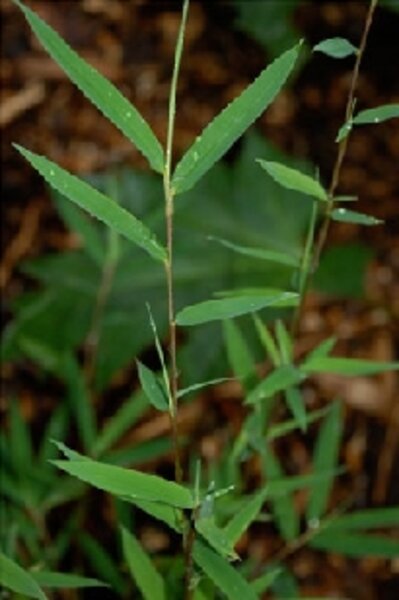The Transplanted Gardener meets the not-so-big bamboo
Loading...
When I lived in Miami, I used to like to help some friends clear up their new yard – a bamboo grove on the then sketchier side of Coconut Grove. They called the place the Big Bamboo.
Their towering bamboos would do that gently clacking thing, sounding all peaceful and dreamy and tropical. And then they would shed detritus all over the forest floor.
To clean the place up, we would have to step around the emerging shoots – which looked like nuclear-altered, zombie mondo-asparagus – and you could almost see them grow. These shoots were at least 7 inches around as they emerged and grew about that much a day.
Word in garden circles thereabouts was that this kind of bamboo was used as a torture instrument by early Floridians who would tie their victim on the ground on top of a shoot just as it was starting to grow.
After moving to central Iowa, I gave up on finding any hardy palm trees that might grow here (although I did find several that will grow as far north as Philadelphia), and settled on bamboos instead.
Success.
Two varieties do quite well here, and in November and even December they are often the only green growth in the garden.
Fargesias – both nitida (fountain bamboo) and murielae (umbrella bamboo) – are hardy to 20 degrees below (F.), although I have had better luck with the murielae. (See photo above.) Both are “clumping” bamboos, which means they mind their manners and don’t run rampart in your yard. In my little “tropical garden” area, theygrow only to about 3 feet tall and make an effective screen around the barbecue grill.
Another not-so-well-known bamboo is actually an American native. Specifically, Arundinaria gigantea. )See photo at right.) The bamboo canebrakes you may have heard of were the widespread stands that grew along the rivers and streams of the Midwest and were often grazed by the buffalo.
I was introduced to this splendidly hardy bamboo by Adam Turtle, a specialist nurseryman.
While this river cane is a spreader, do not recoil in horror. Any errant runners are easily removed and just as easy to transplant. Mr. Turtle says you don’t have to dig in deep edging or restraints around them, as you do with other rapacious running bamboos. You can even contain them by mowing the outer edges of your bamboo stand, he says.
I grow them as a 4-foot foundation plant in the shady tropical nook on the side of my 1911 Victorian home. The leaves look especially handsome with a bit of snow clinging to them.
What else I’m into this week: My pawpaw trees are finally gaining some maturity. I’m hoping for my first fruit next year. Wonderful crème brulee fruit aside, they make striking landscape-size trees, adding – again – a touch of tropicality with their oversize floppy leaves and lurid little purple flowers.
Editor’s note: To learn about more than 300 species and varieties of bamboo, see "Timber Press Pocket Guide to Bamboos," by Ted Jordan Meredith.
To read more by Craig Summers Black, the Transplanted Gardener, check our blog archive. For more Monitor gardening, see our main gardening page and our RSS feed.
You may also want to visit Gardening With the Monitor on Flickr. Take part in the discussions and get answers to your gardening questions. If you join the group (it’s free), you can upload your garden photos and enter our next contest. We'll be looking for photographs of fruits. So find your best shots of summer's blueberries, peaches, plums, etc., and get out your camera to take some stunning shots of early fall apples. Post them before Sept. 30, 2009, and you could be the next winner.






